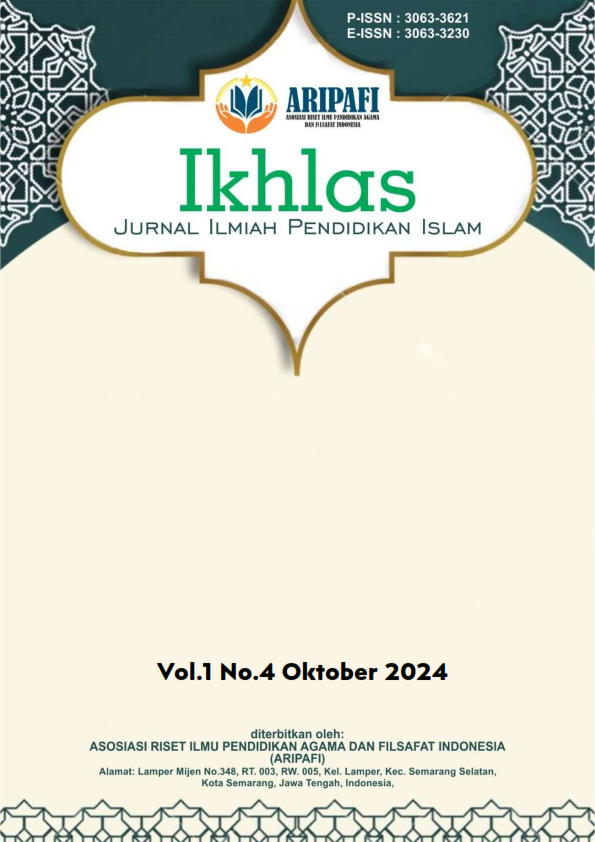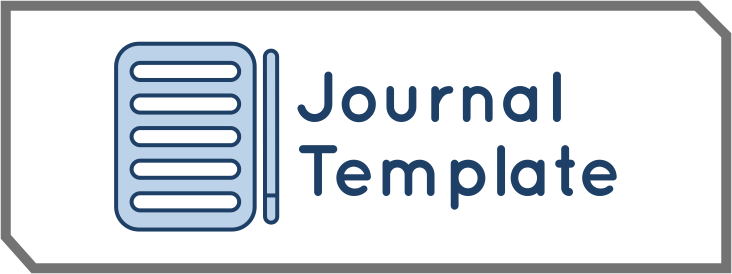Penerapan Pembelajaran Pendidikan Agama Islam Bagi Siswa Berkebutuhan Khusus di SLB N Banjarnegara
DOI:
https://doi.org/10.61132/ikhlas.v1i4.191Keywords:
Islamic Religious Education Learning, Students with Special Needs, Special SchoolsAbstract
The process of learning Islamic Religious Education in SLB N Banjarnegara is an educational interaction between students and the school environment. In this case, schools are given the freedom to choose the most effective learning strategies, methods and techniques according to the characteristics of the subjects, characteristics of students, characteristics of teachers, and resources available at the school. With this freedom, researchers are interested in conducting further research related to the implementation of Islamic Religious Education learning for students in SLBN Banjarnegara. This study aims to describe the implementation of Islamic Religious Education learning for students in SLBN Banjarnegara. This type of research is field research (Field Research) with a qualitative descriptive approach with data collection techniques through observation, interviews, and documentation. While the data analysis method uses Data Reduction, Data Presentation, and Conclusion Drawing. Based on the results of the research conducted by the author on the implementation of Islamic Religious Education learning for students with special needs in SLB N Banjarnegara. There are three results from this study, including (1) The concept of Islamic Religious Education learning for students with special needs (2) implementing the application of Islamic Religious Education learning with various strategies (3) Constraints and supporters of the Islamic Religious Education learning process for students with special needs. For the implementation process, the teacher delivers material that is adjusted to the abilities of the students. Meanwhile, the methods used by the teacher are lecture methods, questions and answers, and practice. In addition, it is supported by using media so that students are interested and focused on following the learning. In addition, the teacher also does not give many assignments or questions but rather does more repetition. Meanwhile, the evaluation carried out on mentally retarded children is adjusted to the abilities of the students themselves. The evaluation tools used by the teacher do not specifically have documents.
References
Efendi, M. (2009). Pengantar Psikopedagogik anak berkelainan . Jakarta: Bumi Aksara.
Hanafy. (2016). Konsep Belajar dan Pembelajaran. Jurnal Ilmu Tarbiyah dan Keguruan, 24-25.
Majid, A. (2012). Belajar dan Pembelajaran . Bandung: Remaja Rosdakarya.
Moeleong, L. J. (2006). metode penelitian kuantitatif . Bandung: PT. Remaja Roskarya.
Mundir. (2013). metode penelitian kualitatif dan kuantitatif. jember: STAIN Press.
Nisa, K. (2020). panorama pembelajaran pendidikan agama islam pada anak berkebutuhan khusus . Sekolah luar biasa ABCD Dharmawanita Herlang Educandum Vol(6(1), 106-108.
R, C. (2021). Pelaksana pembelajaran pendidikan agama islam di SLB ABCD Tunas Pembangunan 2 Bojongsari . surakarta: skripsi UIN Raden Mas Said Surakarta, 88-89.
Setiawan, A. A. (2018). Metode Penelitian Kualitatif. Jawa Barat: CV Jejak.
Sodik. (2015). Dasar Metodologi Penelitian . yogyakarta: Litersi Media Publishing.
Sofyan. (2004). pendidikan berparadigma profetik,upaya konstruktif membongkar dikotomi sistem pendidikan islam. Yogyakarta: pustaka Pelajar.
Sudaryono. (2016). metode penelitian pendidikan. Jakarta : Prenadyamedia Group.






